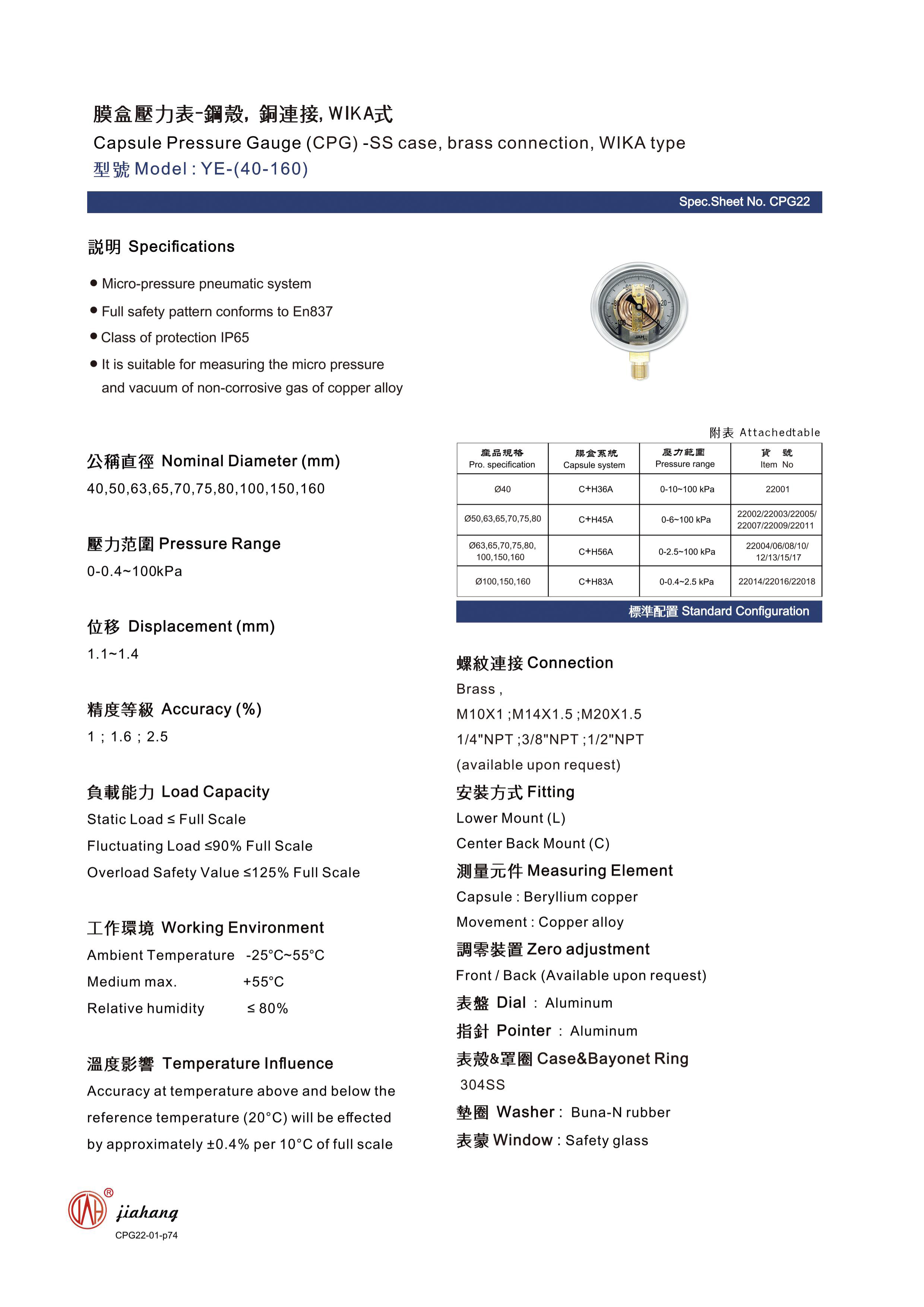
Dec . 04, 2024 11:00 Back to list
Differential Pressure Gauge Setup for Accurate Measurement and Monitoring Systems
Differential Pressure Gauge Assembly Understanding Its Importance and Functionality
In various industrial applications, monitoring and controlling pressure is crucial for ensuring safety, efficiency, and operational integrity. One of the most essential instruments used for this purpose is the differential pressure gauge assembly. This device enables users to measure the difference in pressure between two points within a system, providing valuable insights into the operational performance of equipment and processes.
What is a Differential Pressure Gauge?
A differential pressure gauge is a specialized instrument designed to measure the difference in pressure between two locations. Unlike a standard pressure gauge that measures absolute or gauge pressure at a single point, a differential gauge can provide a comparative measurement. This capability is vital in applications such as HVAC systems, filtration processes, and liquid flow systems, where understanding pressure differentials can directly affect performance and safety.
Components of a Differential Pressure Gauge Assembly
The typical differential pressure gauge assembly consists of several key components
1. Sensing Elements These are the parts of the gauge that respond to pressure changes. Typically, two pressure sensing ports are connected to the points of interest in the system. When there is a difference in pressure between these points, it results in a mechanical movement that translates into a reading on the display.
2. Transmitter In modern applications, differential pressure transmitters are often used in place of traditional mechanical gauges. These electronic devices convert the differential pressure reading into an electrical signal that can be easily monitored and recorded.
3. Display This is where the pressure difference is presented to the operator. Displays can vary from analog dials to digital screens, depending on the design and technological sophistication of the assembly.
4. Mounting Accessories Proper installation is critical for accurate readings. Differential pressure gauges often come with mounting hardware and accessories that allow for secure and stable placement within the system.
differential pressure gauge assembly

Applications of Differential Pressure Gauges
Differential pressure gauges are utilized across various industries, including
- HVAC Systems In heating, ventilation, and air conditioning, these gauges help monitor filters’ performance. A significant pressure drop across a filter indicates that it may be clogged, necessitating maintenance to ensure optimal airflow and system efficiency.
- Process Industries In industries such as oil and gas, pharmaceuticals, and food processing, differential pressure gauges are used to measure flow rates, detect leakages, and monitor equipment health. They play a crucial role in ensuring that processes operate within safe pressure ranges.
- Water Treatment In water treatment plants, differential pressure gauges assist in monitoring the performance of filtration systems, ensuring that the water purification process remains efficient and effective.
Importance of Regular Calibration and Maintenance
For differential pressure gauges to provide accurate and reliable readings, regular calibration and maintenance are essential. Over time, gauges can drift in accuracy due to environmental factors or mechanical wear. Implementing a routine maintenance schedule ensures that the instrument remains within its specified accuracy range, allowing for precise monitoring of system performance.
Conclusion
The differential pressure gauge assembly is an indispensable tool in various industrial sectors. By measuring the pressure difference between two points, these devices provide critical data that can enhance operational efficiency, prevent equipment failure, and ensure safety. As technology progresses, the evolution of differential pressure measurement—ranging from traditional mechanical gauges to advanced electronic transmitters—continues to play a pivotal role in modern industrial practices. Understanding its functionality and maintaining its accuracy are key to leveraging the full potential of this valuable instrument.
-
High-Precision 5 Valve Manifold Differential Pressure Gauge Suppliers
NewsApr.29,2025
-
High-Precision Diaphragm Vacuum Pressure Gauges Manufacturers & Quotes
NewsApr.29,2025
-
Omega Differential Pressure Gauges High Accuracy & Durability
NewsApr.28,2025
-
Low Pressure Differential Pressure Gauges Precision Solutions & Quotes
NewsApr.28,2025
-
Digital Diaphragm Pressure Gaauge Precision Measurement & OEM Quotes
NewsApr.28,2025
-
Differential Pressure Gauge China Price High-Accuracy & Best Quotes
NewsApr.28,2025
